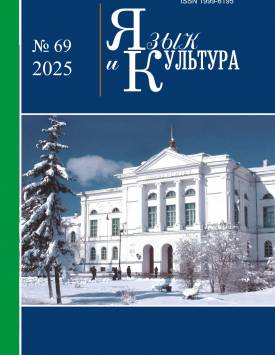Poetry slam as a phenomenon of the Switzerland literary scene
This article presents a comprehensive analysis of poetry slam in Switzerland as a cultural and literary phenomenon. The study, covering the period from 1999 to 2024, aims to investigate the historical development of poetry slam in Switzerland, identifying its key stages of formation and development, determining the influence of linguistic specificity on poetic practice, and characterizing the organizational structure and format of poetry slam in Switzerland. The paper examines key figures of the Swiss slam scene, analyzing the linguistic, stylistic, and thematic features of Swiss slam poetry. The research methodology relies on a comprehensive approach combining elements of historical, cultural, descriptive, and linguistic analysis. The historical method allows tracing the key stages and trends in the genesis of poetry slam in Switzerland. The cultural method focuses on analyzing poetry slam as a poetic phenomenon of the alternative literary scene and entertainment product of the cultural industry in the Germanspeaking world in general and Switzerland in particular. The descriptive method enables systematic description of the characteristics of poetry slam in Switzerland, including its format, organizational structure, stylistic and thematic peculiarities. The linguistic method involves conducting a qualitative analysis of texts and poetic performances by Swiss slam poets available in the online space. The theoretical basis of the research draws on the analysis of scientific sources, supplemented by studying publications in German-language media and specialized portals on the topic of the study. The empirical base of the research consists of poetry slam works available online in video format as of the time of the study. Video materials allow analyzing the text in its performative implementation. A multimedia catalog compiled during the research systematically categorizes materials by the year of performance, providing access to texts, video recordings, information about authors, performance locations, and participation categories. Despite clear trends towards standardization of the poetry slam format in Switzerland, an independent culture of poetic competition persists, founded on accessibility of participation and evaluation for everyone, as well as a focus on creativity, making it a form of social activity. The article examines Swiss poetry slam as a successful example of the commercialization of poetry, where poetry is presented as an entertainment service in the cultural sphere. Poetry slam, as a synthetic form of contemporary art, combines elements of poetry, stage performance, and competition. Slam poetry is characterized by the absence of a single standard of poetic structure, demonstrating a variety of metric forms and widespread use of free verse. The performative nature of poetry slam implies active interaction between the soloist and the audience, which affects the linguistic and stylistic features of the works. Slam poets use vivid imagery, lively intonation, improvisation, and other theatrical elements to attract the audience's attention and create a unique atmosphere for the performance. The competitive aspect encourages poets to create the most vivid, memorable, and effective performance, adds dynamics to the event, and contributes to the democratization of poetry, as the competition allows both experienced poets and newcomers to express themselves, making poetry more accessible to the general public. Poetry slam in Switzerland is represented in Swiss German, German, French, and Italian. While performers reciting in Swiss German currently constitute the most significant part of the scene, the presence of French and Italian-speaking poets, such as Pablo Michelli, Loc Nguyen, Patrick Guillen, Celia (French) and Marco Miladinovic (Italian), demonstrates the diversity and multilingualism of the Swiss cultural landscape. The Swiss poetry slam scene has developed its own identity and unique national character through a gradual shift from literary German to the Swiss dialect in the 2010s. This linguistic shift has allowed slam poets to express their individuality and connection to local culture. The development of the slam scene beyond major cities, with the opening of new local venues, has also contributed to linguistic diversity. Poets have had the opportunity to perform in their native dialects, making the slam scene more inclusive and diverse. Thus, the shift in language and the expansion of geographical reach have allowed Swiss poetry slam to shape its own cultural identity. Swiss poetry slam is a space for a lively, dynamic, and expressive language that reflects natural conversational speech and the characteristics of local dialects. Swiss poetry slam, unlike its German counterpart, predominantly focuses on personal and everyday themes, employing humor as a tool to engage the audience and maximize impact. Despite its predominantly entertaining nature, political topics are also present, although less frequently than in German slam. The author declares no conflicts of interests.
Keywords
slam poetry, poetry slam, Switzerland, poetic performance, modern German-language poetryAuthors
| Name | Organization | |
| Petrova Maria V. | Lomonosov Moscow State University | pmascha@yandex.ru |
References

Poetry slam as a phenomenon of the Switzerland literary scene | Yazyk i Kultura – Language and Culture. 2025. № 69. DOI: 10.17223/19996195/69/4
